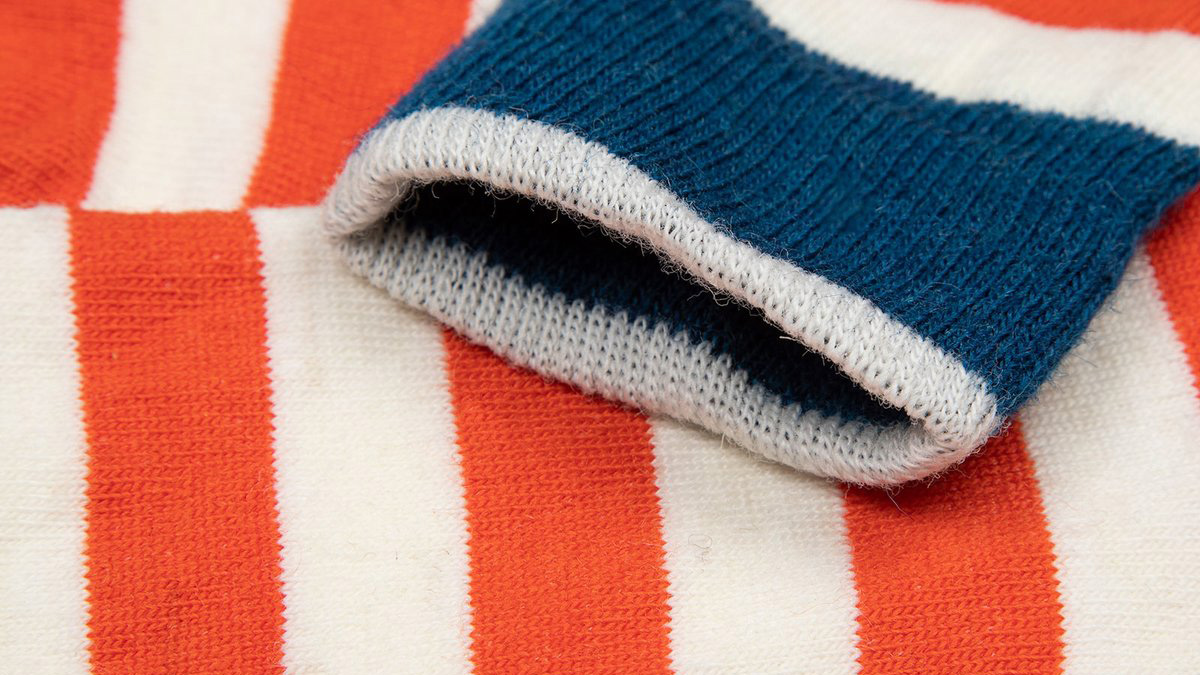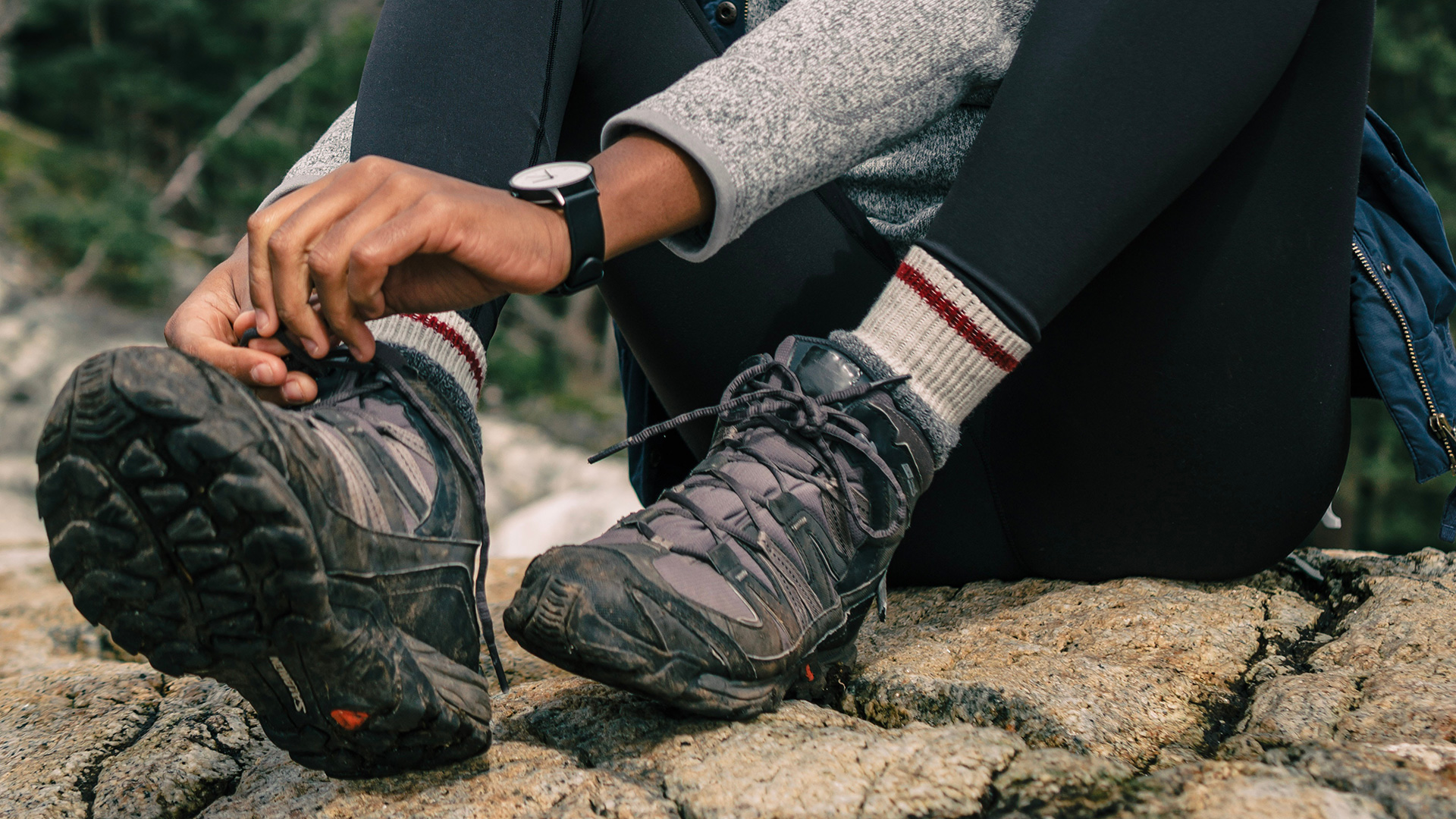

If you want comfortable, fresh and blister-free feet when out walking and hiking, then a good pair of socks is essential. Today's best hiking socks will help prevent blisters, cushion your feet, and stop you getting sweaty and uncomfortable. However, knowing what kind of socks to go for can be tricky. How thick should they be? What material is best? In this article you'll find all our advice on how to choose the right hiking socks for your trek.
The other half of the equation is, of course, a good and well-fitting pair of hiking boots or walking shoes, and we've taken the hard work out of hunting for them by putting together our recommendations for best hiking boots for women and men.
Thick vs thin hiking socks?
If you're planning a long walk, it can be tempting to go for the thickest pair of socks you can find to add comfort and cushioning, but the thickest socks aren't always the most comfortable. While their insulating properties are welcome in the winter, thick socks can be too hot in some conditions, can bunch and catch about the foot and ankle which can cause pressure hot spots and sometimes blisters, and may not be the most breathable.
Sock technology is so good now that hiking sock manufacturers are able to produce knits with zoned and targeted thickness, providing you cushioning only where it's needed. This means the best walking socks might well be lightweight socks that offer breathability and comfort in hot conditions while still giving you the comfy cushioning you need underfoot.
You'll also need to consider your footwear. Thick socks will increase the volume of your foot, so you'll need to make sure that either they'll fit with the boots or shoes you have, or that you buy footwear in a bigger size to accommodate thicker socks.

These Smartwool Hike Light Cushion Tube Stripe Crew Socks are thinner, but with targeted padding where required
What fabric is best for hiking socks?
Wool is by far and away the most popular fabric for walking socks, and has been for decades. It offers excellent temperature regulating properties, it's breathable, insulating, and naturally antimicrobial so generally doesn't get as pongy as synthetic alternatives. Merino wool is particularly popular, thanks to its softer fibre which avoids the scratchiness that other wool knits can have. Wools is rarely used completely pure; it's often blended with fibres like elastane to provide stretch and a better fit, and polyester for durability.
Silk is also sometimes used though generally more for thin liner socks, more on which shortly.
Get all the latest news, reviews, deals and buying guides on gorgeous tech, home and active products from the T3 experts
Happily, there are also plenty of choices for walkers who don't want to use wool or animal-derived fibres, which have wicking, insulating and comfort properties equal to wool-based socks. They're also increasingly being made with recycled materials, for example from PET plastic bottles, so they help reduce waste in the environment.
Synthetic fibres include nylon, polyester, CoolMax, Thermolite, Elastane, etc and are usually blended to get the right mix of properties for different conditions.

Finisterre Last Long Original Socks are made from the most popular hiking sock material – wool
Polyester wicks well, is insulating and dries quickly. Nylon is a very durable fibre, imbuing fabric with strength and longevity. Coolmax is a fibre designed to wick away moisture and allow quick dissipation of heat, while Thermolite is a heat-insulating fabric that's also compact and lightweight. And of course Elastane adds the stretch that a good sock needs.
Cotton socks are not a good idea, as cotton isn't as good at wicking sweat away and is more likely to hold it next to the skin. This isn't only uncomfortable; damp skin in the feet makes blisters much more likely, so it's best to opt for synthetic or wool socks instead.
How long should they be?
The length of socks you go for will depend on your footwear, the terrain you're travelling through and of course personal preference.
No-show or ‘footie' socks, which cover just the feet and stop below the ankle, are a good choice for hot weather and for walking trainers or cross-country trainers. However, they don't provide any protection or support at the ankle or lower leg and therefore aren't recommended for hiking shoes or walking boots, as there is the possibility of chafing.
Ankle socks provide a bit more coverage, and can be worn with hiking shoes and boots so long as they are tall enough to form a protective layer between the footwear and your skin. That said, they're not high enough to protect the leg from scratches and scuffs from undergrowth so if you're likely to encounter this, then go for something a bit longer.

The vast majority of walking socks are mid-calf-length or crew length, and this length has the advantage of offering plenty of protection from undergrowth and biting insects, as well as supporting the ankle and lower leg, and forming a blister-avoiding layer between the foot, ankle and footwear. They're particularly well suited to walking boots.
If the conditions are cold, wet, or you know you're going to be striding through long undergrowth, you may prefer to opt for knee-length hiking socks. These will offer maximum protection and insulation, though they can be too warm in hot weather. They'll also tend to be thicker as this length is often designed with winter walking in mind, though you can find thinner versions.
Another reason to opt for knee-length is if you choose to wear a compression walking sock, which can help support muscles and blood flow, keeping your legs feeling fresher for longer.
- Shorter socks? A pair of the best walking trousers...
- ... or best hiking leggings will protect your legs
Two skin socks versus single layer socks
If you want to avoid blisters, there are two things you need a sock to do. Firstly, wick away moisture so the skin isn't too damp, which most modern socks are excellent at. Secondly, you need to avoid friction as it's that repeated rubbing motion that causes blisters to form.
In the past, this was often achieved by using liner socks; a very thin pair of socks, often made of silk, that sat close to the skin underneath the walking socks. Any rubbing then occurred between the liner sock and the other layers, rather than the skin of the foot. They are still popular with a lot of walkers, and worth trying if you find you suffer with blisters a lot.
However, sock technology has improved so much that most modern walking socks are generally very good at preventing blisters, chafing and pressure points. They either do this by a well designed single layer, which sits snugly against the skin and protects it, or by an integrated two layer system which does the same job as a liner sock – these are sometimes called twin skin socks.
Twin skin socks can be very good at preventing blisters, but they are also often thicker than single layer socks so can be bulkier and warmer. Some people also find that, depending on the design, their feet slide around in twin skin socks which can be uncomfortable, so it's worth looking for twin skin socks where the second layer is zoned in key areas where blisters are likely to occur.
Single layer socks are available in a wide range of thicknesses, so it's possible to get a thinner, more breathable sock for warmer conditions which can help keep your feet dryer. Most people find that single layer socks combined with a good-fitting pair of hiking boots or walking shoes are fine for blister prevention.
Caring for your hiking socks
Like boots, hiking socks are an investment in your comfort and performance, so if you do a lot of walking or you have a long distance to cover, it's worth spending a bit more to get good quality and fit.
And once you've invested, you'll want to look after them so they stay in excellent condition and serve you well mile after mile.
The best way to look after them is wash them by hand at the end of each walk with a mild detergent and allow them to dry overnight, if you can. Many socks can be machine washed too; always read the care instructions, and we'd recommend treating them as a delicate and washing them on a low temperature, low spin setting, and again allowing them to air dry rather than using a tumble dryer.
Writer, journalist and Spindrift Podcast host Aoife has over 10 years product-testing experience, and has written and reviewed for Red Bull, MBUK, Trek UK, Bikeradar, BikePerfect, Cycling Plus, Fit&Well and of course T3 (and a few others). A keen cyclist, mountain biker and outdoor adventurer, you’ll usually find her out in the forests or up a mountain somewhere.
